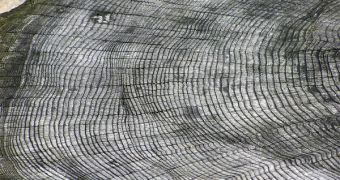The amount of cosmic rays circulating in the solar system should be of interest to everyone. As the Sun gets weaker over the course of the solar minimum, more and more radiation reaches our planet, passes the atmosphere and heads down to the earth. Apparently, not all its effects are bad. Experts in the United Kingdom have established that the patterns of cosmic-ray activities are a clear determinant for the speed at which trees grow. Their finds appear in the latest issue of the scientific journal New Phytologist, the BBC News reports.
The investigation revealed that the changes in cosmic-ray intensities had a greater effect on the growth patterns than more earthly factors, such as the amount of precipitation, or the changes in temperature. “We were originally interested in a different topic, the climatological factors influencing forest growth,” University of Edinburgh Institute of Atmospheric and Environmental Science postgraduate researcher Sigrid Dengel explains. Scientist Dominik Aeby and Professor John Grace, also from the University, have participated in the research as well.
They analyzed slices of spruce tree trunks. The trees had been planted in 1953, and were brought down in 2006. The wood was provided by the Forestry Commission's research branch, Forest Research, and came from the Forest of Ae, in Dumfriesshire, Scotland. The slices were frozen, so as to prevent the wood from shrinking, and then the experts analyzed their rings and growth patterns using a computer. Naturally, as the trees got older and bigger, they exhibited lower growing speeds over the years.
However, the researchers noted that, in certain years, the decrease in speed was more accentuated than in the others. They cross-referenced this knowledge with the charts showing the intensity of cosmic rays during those particular years, and noticed a direct, statistically relevant correlation. “The correlation between growth and cosmic rays was moderately high, but the correlation with the climatological variables was barely visible,” Dengel says.
“We tried to correlate the width of the rings, i.e. the growth rate, to climatological factors like temperature. We also thought it would be interesting to look for patterns related to solar activity, as a few people previously have suggested such a link. We found them. And the relation of the rings to the solar cycle was much stronger than it was to any of the climatological factors we had looked at. We were quite hesitant at first, as solar cycles have been a controversial topic in climatology. As for the mechanism, we are puzzled,” she concludes.

 14 DAY TRIAL //
14 DAY TRIAL //